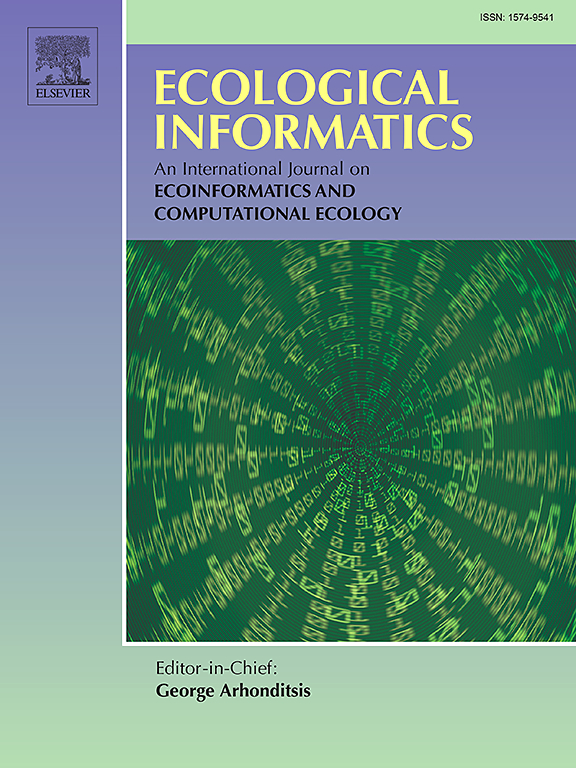泛北极生态系统陆地植被碳动态的主要气候驱动因素辨析
IF 7.3
2区 环境科学与生态学
Q1 ECOLOGY
引用次数: 0
摘要
在过去的几十年里,由于气候变暖,泛北极陆地生态系统经历了广泛的绿化。然而,由于高纬度地面测量的限制,泛北极地区这种绿化的动态变化和气候原因仍然不清楚。该研究首先评估了三种基于卫星的植被指数(VIs)在过去几十年与多源观测的泛北极碳动态的适用性。近23 a来,泛北极生态系统的3种VIs呈显著增加趋势(0.0005 ~ 0.0017 yr−1),植被近红外反射率(NIRv)比其他植被类型(如草地)更能捕捉泛北极陆地碳的动态变化(如增加趋势)。利用2001 - 2023年泛北极生态系统的偏相关和脊回归分析,进一步量化了气候因子对卫星基NIRv变异的贡献。在整个泛北极生态系统中,由于施肥和变暖效应,二氧化碳(CO2)和气温(AT)与基于卫星的NIRv呈正偏相关。然而,在高(低)泛北极生态系统中,由于气孔对空气干燥的不同响应,水汽压亏缺(VPD)与NIRv变化呈正(负)部分相关。因此,尽管在高(低)泛北极生态系统中检测到正(负)效应,但VPD的增加对泛北极NIRv变异性的贡献为11.2%。这些发现突出了NIRv在反映脆弱生态系统(如泛北极)陆地碳动态方面的优势,并揭示了气候变暖下区域气候(如空气干燥)对泛北极生态系统的多种影响。本文章由计算机程序翻译,如有差异,请以英文原文为准。
Distinguishing the main climatic drivers of terrestrial vegetation carbon dynamics in pan-Arctic ecosystems
Pan-Arctic terrestrial ecosystems have experienced widespread greening over the past few decades due to climate warming. However, the dynamic variations and climatic causes of such greening in the pan-Arctic are still unclear due to limitations in high-latitude ground-based measurements. The study first evaluated the applicability of three satellite-based vegetation indices (VIs) for pan-Arctic carbon dynamics in previous decades compared with multisource observations. Three VIs presented significant increasing trends up to 0.0005–0.0017 yr−1 for pan-Arctic ecosystems in the past 23 years, and near-infrared reflectance of vegetation (NIRv) could better capture pan-Arctic terrestrial carbon dynamic variations (e.g., increasing trends) than other VIs among most vegetation types, such as grasslands. The separate contributions of climatic factors to satellite-based NIRv variability were further quantified using partial correlation and ridge regression analysis over pan-Arctic ecosystems from 2001 to 2023. Carbon dioxide (CO2) and air temperature (AT) presented positive partial correlations with the satellite-based NIRv over entire pan-Arctic ecosystems, due to fertilization and warming effects. However, the vapor pressure deficit (VPD) showed positive (negative) partial correlations with NIRv variations in high (low) pan-Arctic ecosystems because of diverse stomatal responses to air dryness. Therefore, increases in VPD contributed 11.2 % of the pan-Arctic NIRv variability, although positive (negative) effects were detected for high (low) pan-Arctic ecosystems. These findings highlight the advantages of the NIRv for representing terrestrial carbon dynamics in fragile ecosystems (e.g., the pan-Arctic) and reveal the diverse effects of the regional climate (e.g., air dryness) on pan-Arctic ecosystems under climate warming.
求助全文
通过发布文献求助,成功后即可免费获取论文全文。
去求助
来源期刊

Ecological Informatics
环境科学-生态学
CiteScore
8.30
自引率
11.80%
发文量
346
审稿时长
46 days
期刊介绍:
The journal Ecological Informatics is devoted to the publication of high quality, peer-reviewed articles on all aspects of computational ecology, data science and biogeography. The scope of the journal takes into account the data-intensive nature of ecology, the growing capacity of information technology to access, harness and leverage complex data as well as the critical need for informing sustainable management in view of global environmental and climate change.
The nature of the journal is interdisciplinary at the crossover between ecology and informatics. It focuses on novel concepts and techniques for image- and genome-based monitoring and interpretation, sensor- and multimedia-based data acquisition, internet-based data archiving and sharing, data assimilation, modelling and prediction of ecological data.
 求助内容:
求助内容: 应助结果提醒方式:
应助结果提醒方式:


